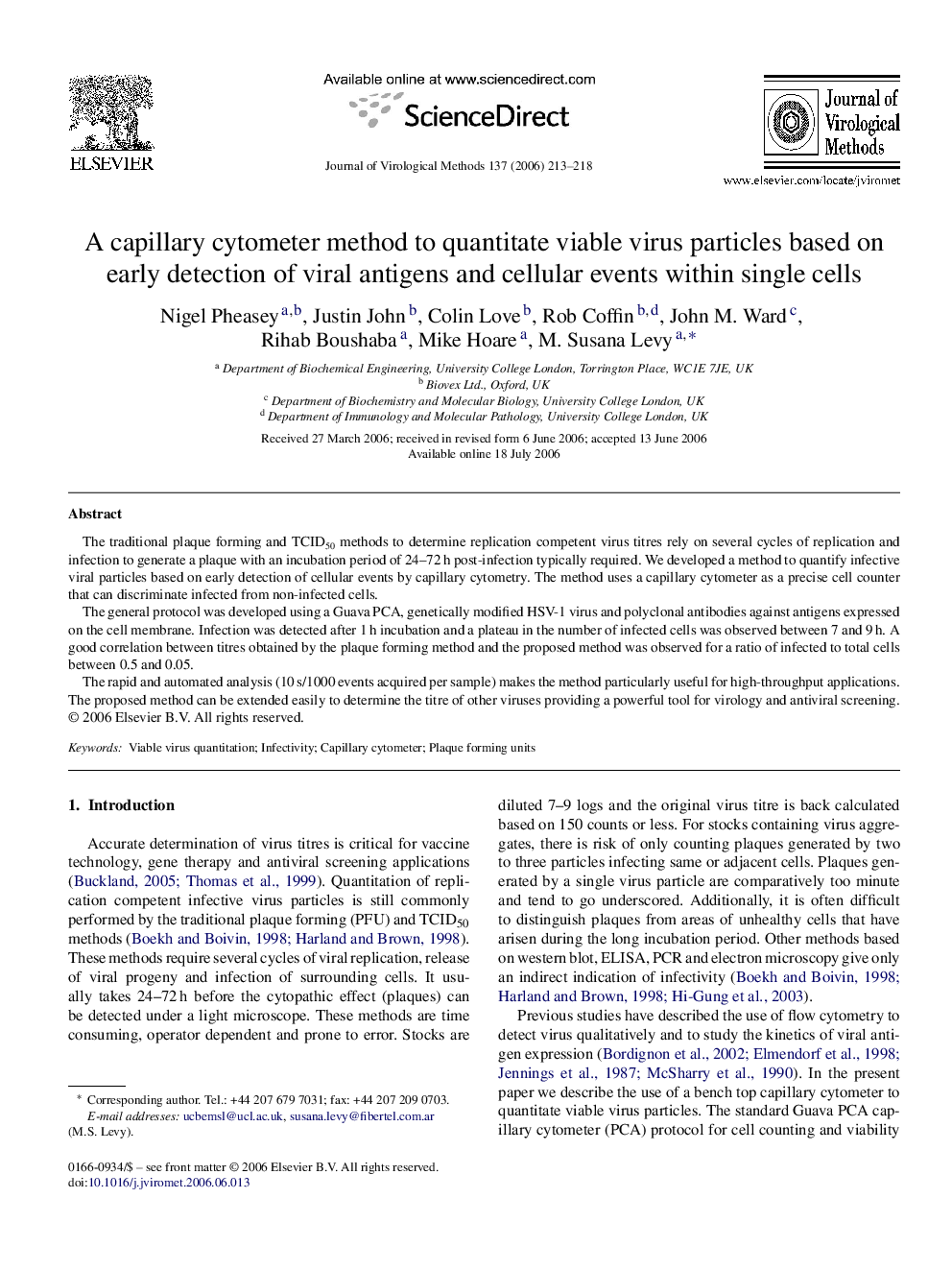| Article ID | Journal | Published Year | Pages | File Type |
|---|---|---|---|---|
| 3408389 | Journal of Virological Methods | 2006 | 6 Pages |
The traditional plaque forming and TCID50 methods to determine replication competent virus titres rely on several cycles of replication and infection to generate a plaque with an incubation period of 24–72 h post-infection typically required. We developed a method to quantify infective viral particles based on early detection of cellular events by capillary cytometry. The method uses a capillary cytometer as a precise cell counter that can discriminate infected from non-infected cells.The general protocol was developed using a Guava PCA, genetically modified HSV-1 virus and polyclonal antibodies against antigens expressed on the cell membrane. Infection was detected after 1 h incubation and a plateau in the number of infected cells was observed between 7 and 9 h. A good correlation between titres obtained by the plaque forming method and the proposed method was observed for a ratio of infected to total cells between 0.5 and 0.05.The rapid and automated analysis (10 s/1000 events acquired per sample) makes the method particularly useful for high-throughput applications. The proposed method can be extended easily to determine the titre of other viruses providing a powerful tool for virology and antiviral screening.
